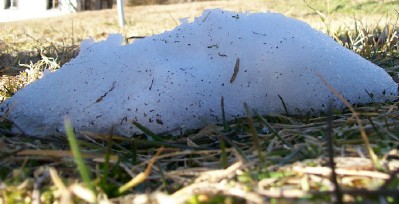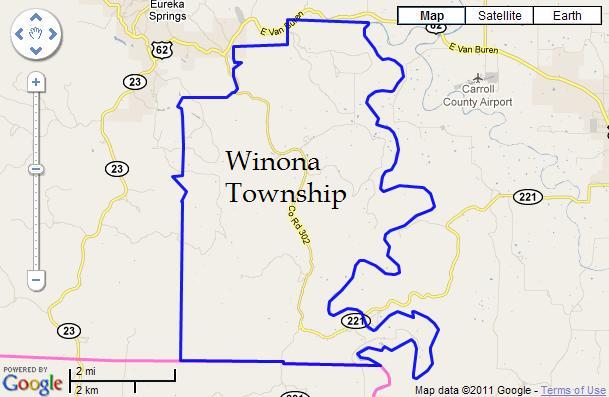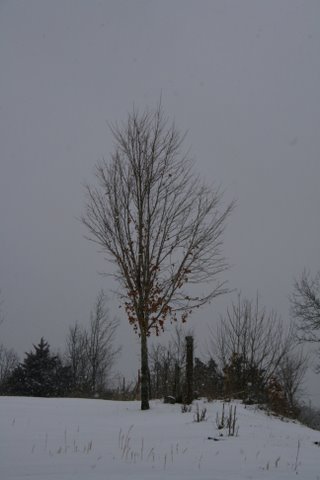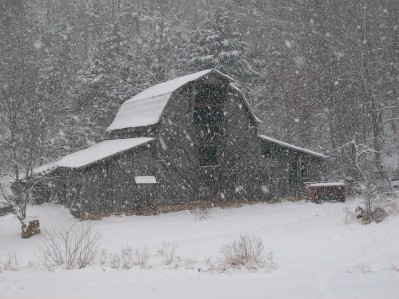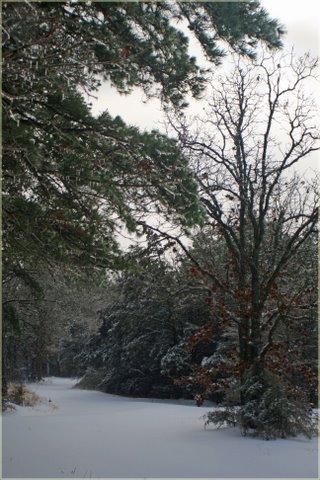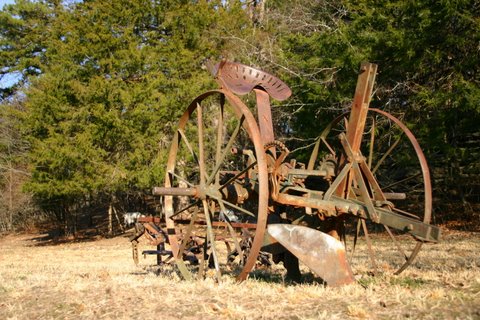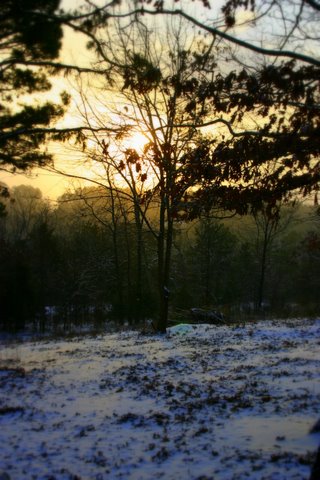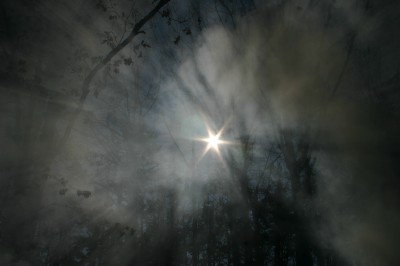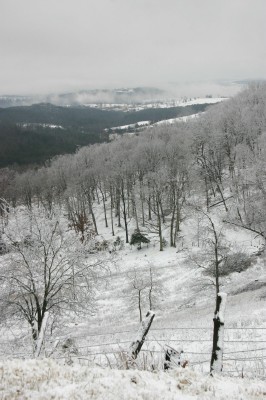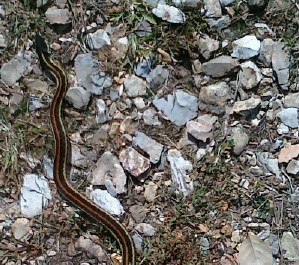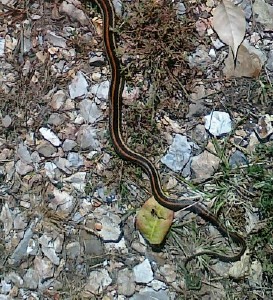With these spring-like temperatures, the snow is quickly disappearing. There are holdouts, however, places the midday sun has less power, as in crevices and small ravines, and on the north-facing slope of the blackberry field.

There are four springs that I know of in our portion of the hollow, and many more nearby. This particular spring flows out of a small bluff into the pond that has previously been just a mud puddle due to our “moderate” drought. We call this spring the Pond Spring for obvious reasons. It is once again flowing above ground, though not too heavily. All the moisture keeps the moss nice and healthy looking.

The amazing eroding power of this small spring has shaped much of this area of the hollow.

The flowing water of the spring slowly and methodically wears away the hillside. It gets in between rocks, washing away dirt and loosening them.

Here you see that the water has found other prey. The spring is digging out the dirt from under this bank. Eventually it will collapse.

Finally, the melted snow that powers the increased flow of the spring goes under an old livestock fence into the small pond.

I’m glad to see the pond once again filling with water. It seems to be a central meeting spot for wildlife of all sorts. As you can see, the willow trees that broke during the 2009 Ice Storm still clutter the pond, providing perches for songbirds.


